It may be that the gulfs will wash
12.8 Journeys: Geographical, Spiritual, and Emotional
The poems, related texts, and art images in this section challenge readers to reflect on the meaning of journeys and travels. We can think of journeys as having emotional, spiritual, and physical dimensions. What journeys have characterized your own life so far? What did you learn as a result of the journey? Are there journeys in life that you would like to embark upon but as of yet, have not? What are these journeys and what do you hope to accomplish?
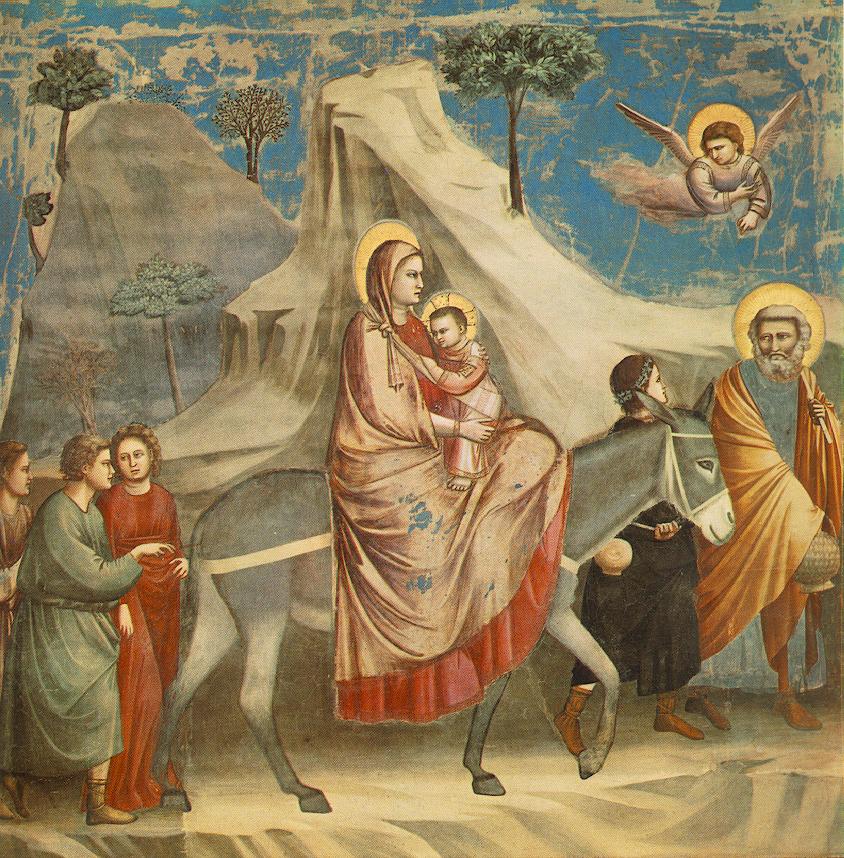
Courtesy: By Giotto – Unknown source, Public Domain, https://commons.wikimedia.org/w/index.php?curid=94615
“The Flight into Egypt” by Thomas Merton
Through every precinct of the wintry city
Squadroned iron resounds upon the streets;
Herod’s police
Make shudder the dark steps of the tenements
At the business about to be done.
Neither look back upon Thy starry country,
Nor hear what rumors crowd across the dark
Where blood runs down these holy walls,
Nor frame a childish blessing with Thy hand
Towards that fiery spiral of exulting souls!
Go, Child of God, upon the singing desert,
Where, with eyes of flame,
The roaming lion keeps thy road from harm.
– Thomas Merton, from Thirty Poems (1944)
For more information please open the link here.
Learning Objectives
Reflect and write a response to 3-4 of the essential questions about travel .
- What do you think is the main benefits of travel?
- How would you describe the different facets of a “journey” (e.g. emotional, physical, cognitive, etc.)
- What does the concept of home mean to you?
- Is it the journey or the destination that’s most important to you?
- What motivates some people to travel?
- What would motivate you to travel? Where would you like to travel?
- What are your earliest memories of travel? Were your experiences positive? Comment further.
- How important is it for you to keep a travel diary? How important is it for you to take photographs of the specific places you have travelled?
- Which travel poems do you find compelling?
- Have you ever written a poem based on your travel experiences?
For more information about inspiring travel poems please open the link here.
“I Dwell in Possibility” by Emily Dickinson
I dwell in Possibility –
A fairer House than Prose –
More numerous of Windows –
Superior – for Doors –
Of Chambers as the Cedars –
Impregnable of eye –
And for an everlasting Roof
The Gambrels of the Sky –
Of Visitors – the fairest –
For Occupation – This –
The spreading wide my narrow Hands
To gather Paradise
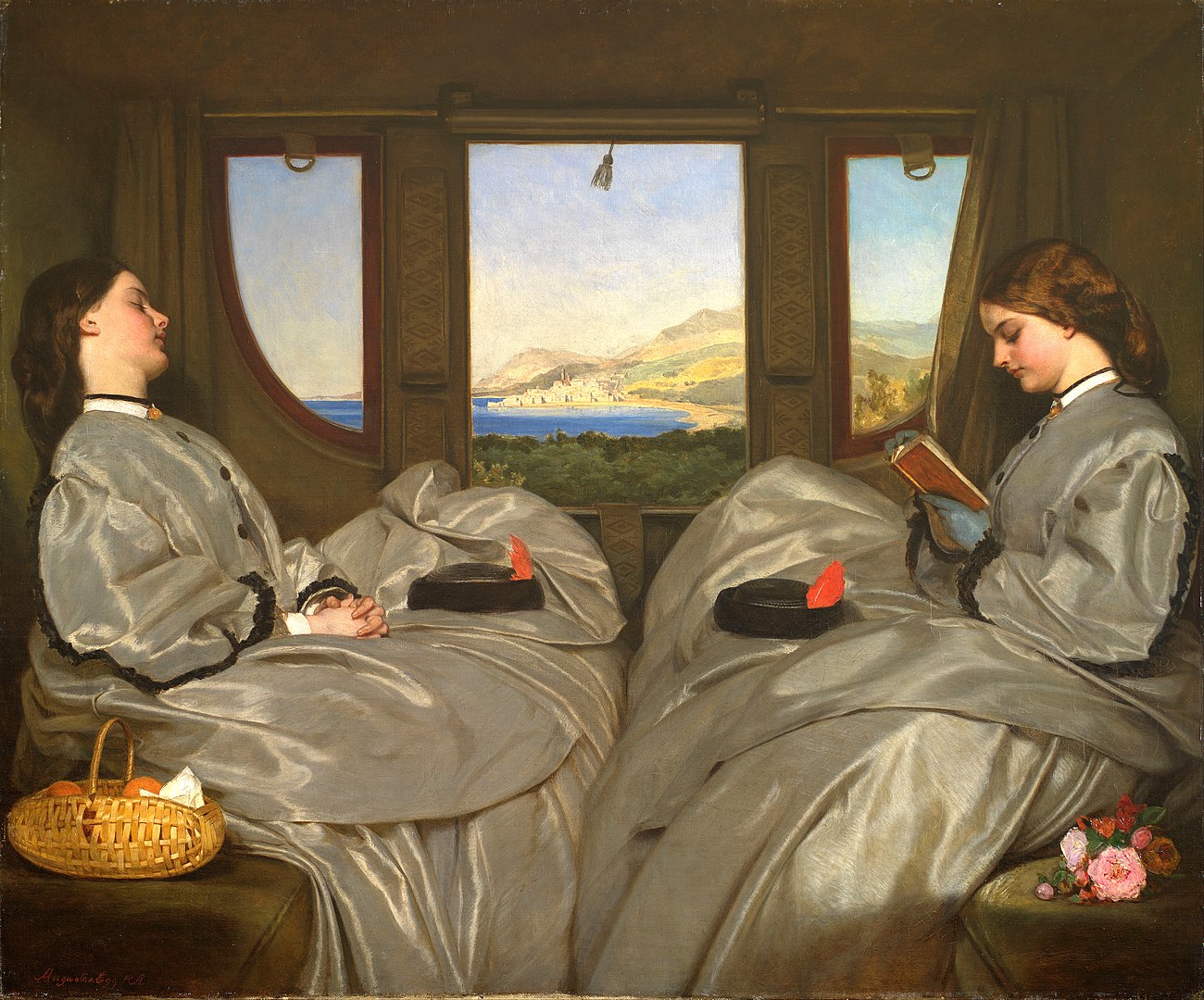
Courtesy: Presented by the Trustees of the John Feeney Charitable Trust, 1956. “https://dams.birminghammuseums.org.uk/asset-bank/action/viewAsset?id=1&index=0&total=2&view=viewSearchItem” is licensed under CC0 1.0.
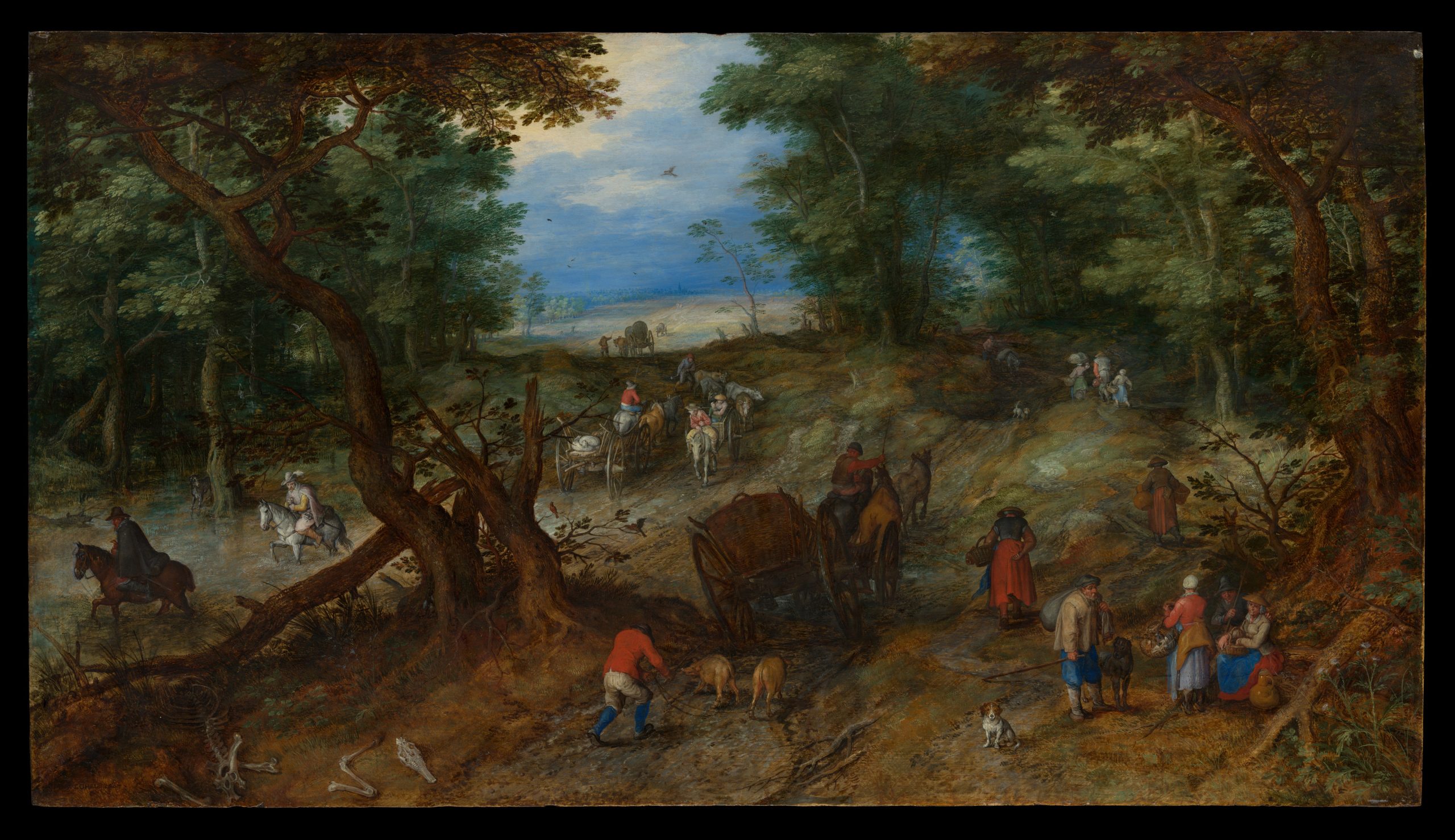
Courtesy: Purchase, Fletcher, Rogers, Pfeiffer, Dodge, Harris Brisbane Dick, and Louis V. Bell Funds, and Joseph Pulitzer Bequest, 1974. “https://www.metmuseum.org/art/collection/search/435810” is licensed under CC0 1.0.
Metropolitan Museum of Art Note about the Painting
“Jan, who was born shortly before the death of his famous father, Pieter Bruegel the Elder, advanced the genre of Northern landscape painting beyond his father’s legacy. In this refined, well-preserved panel, the vast depth of the landscape is balanced by an attention to the humanity of the peasant subjects and their humble tasks in the foreground. The juxtaposition of the living and the dead—the lush woods with a fallen, dead tree, and the living horses with a horse’s skeleton—reflects the mortality of all living things that results in their eventual return to the earth.”
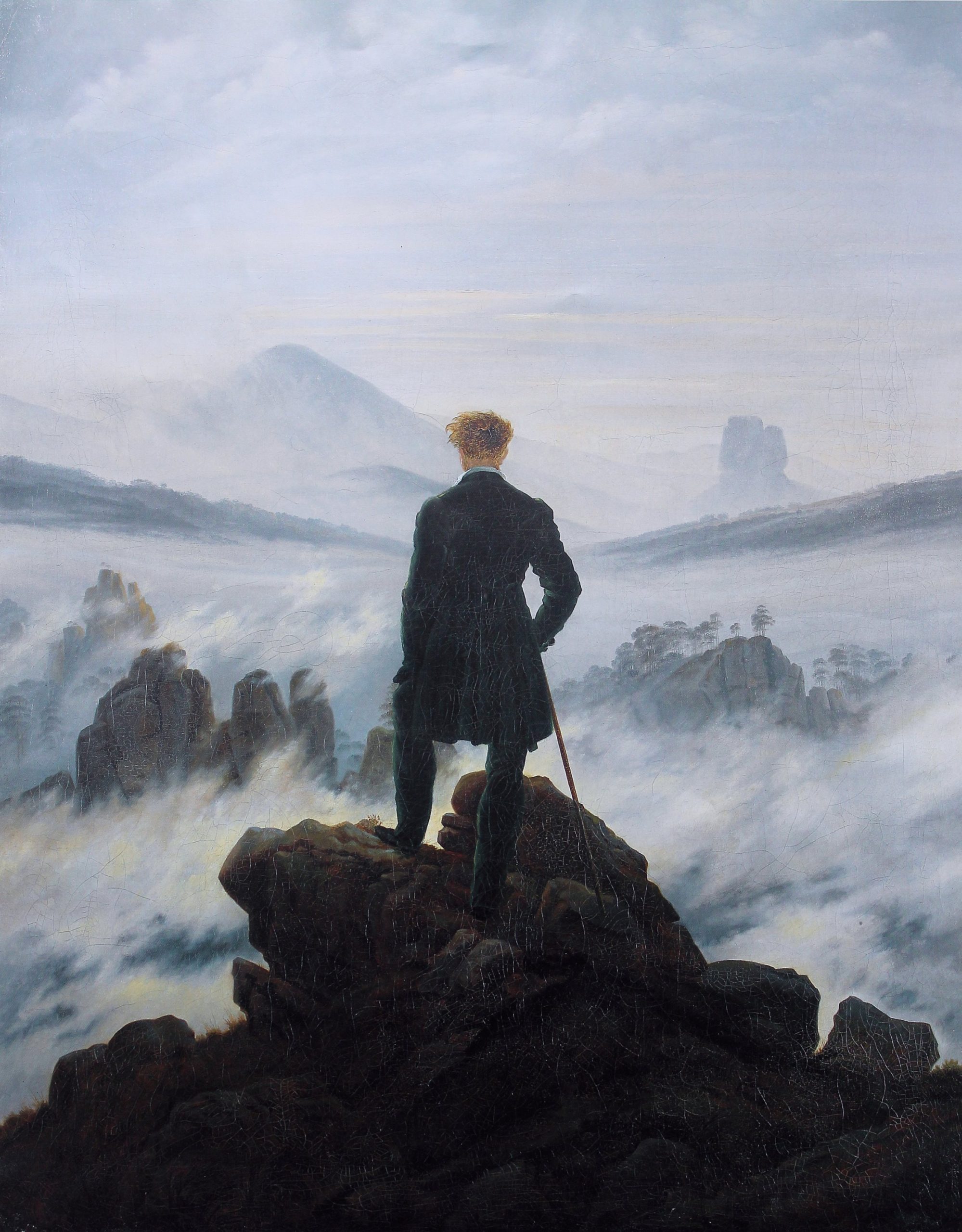
Courtesy: By Caspar David Friedrich – The photographic reproduction was done by Cybershot800i. (Diff), Public Domain, https://commons.wikimedia.org/w/index.php?curid=1020146
fishes!
laughing locomotive!
“The Song of the Traveller” by Thomas Merton
How light the heavy world becomes, when with transparent waters
All the shy elms and wakeful apple trees are dressed!
How the sun shouts, and spins his wheel of flame
And shoots the whole land full of diamonds
Enriching every flower’s watery vesture with his praise,
O green spring mornings when we hear creation singing!
The stones between our steps are radium and platinum
When, on this sacred day, sweet Christ, we climb Your hill;
And all the hours, our steps,
Pray us our way to the high top with silent music from the clouds
As each new bench-mark builds us to a quieter altitude,
Promising those holy heights where the low world will die.
Shall we look back out of this airy treasury
And spill the plenty that we have already in our hands
To view you, cities full of sorcery,
And count the regiments deployed on your grey plain
Where you lie boiling in your smoky wars?
For lo! the music of your treachery
Still plagues us with a sullen rumor in this sinless sun,
And your coarse voice still reaches us.
Sandpapering the silence of our atmosphere.
Shall we turn back to hear those far, far fragile trumpets play?
Let us but lean one moment to the witchery of your thin clarions
And all our flowery mountain will be tattered with a coat of weeds;
And the bright sun, our friend, turning to a prodigious enemy,
Will burn our way with curses,
Hardening our hesitation, in that instant, to a solid weight,
To bake us white as monuments, like Mistress Lot,
Saltpillars planted on the stony road from Sodom.

Courtesy: By Giuseppe Bottani – Sotheby’s Lot.153, Public Domain, https://commons.wikimedia.org/w/index.php?curid=78327332
“As you set out for Ithaka
hope your road is a long one,
full of adventure, full of discovery….” (Cavafy, 1911, excerpt from “Ithaka” translated by Edmund Keeley)
The poem “Ithaka” (published in 1911) by C. P. Cavafy (1863–1933) describes the journey of Odysseus (Ulysses) back to his homeland of Ithaka. It is based on Homer’s The Odyssey. Odysseus prolongs his return in an effort to pursue adventure, wisdom, knowledge, and wealth. Cavafy’s (1911) poem is an expression of hope and the meaning of life. Life’s journeys include many setbacks, disappointments, and tragedies but while there is life, there is hope and a possibility for transformative change. Life is a spiritual journey. To read the complete poem “Ithaka” translated by Edmund Keely, please open the link here. Cavafy’s poems can be compared with Alfred Lord Tennyson’s “Ulysses.” Both poems include references to Homer’s The Odyssey and both poets have an optimistic view of life as a journey of learning and adventure. Knowledge should be followed “like a sinking star beyond the utmost bound of human thought.”
This poem was translated by Edmund Keeley and the complete text can be found here. To learn more about the poem please open the link here.
To listen to audio recordings of “Ithaka” please open the link here.
“Ulysses” by Alfred Lord Tennyson
To read more poems by Alfred Lord Tennyson, please open the link here
and to learn more about the poem “Ulysses” please open the link here.
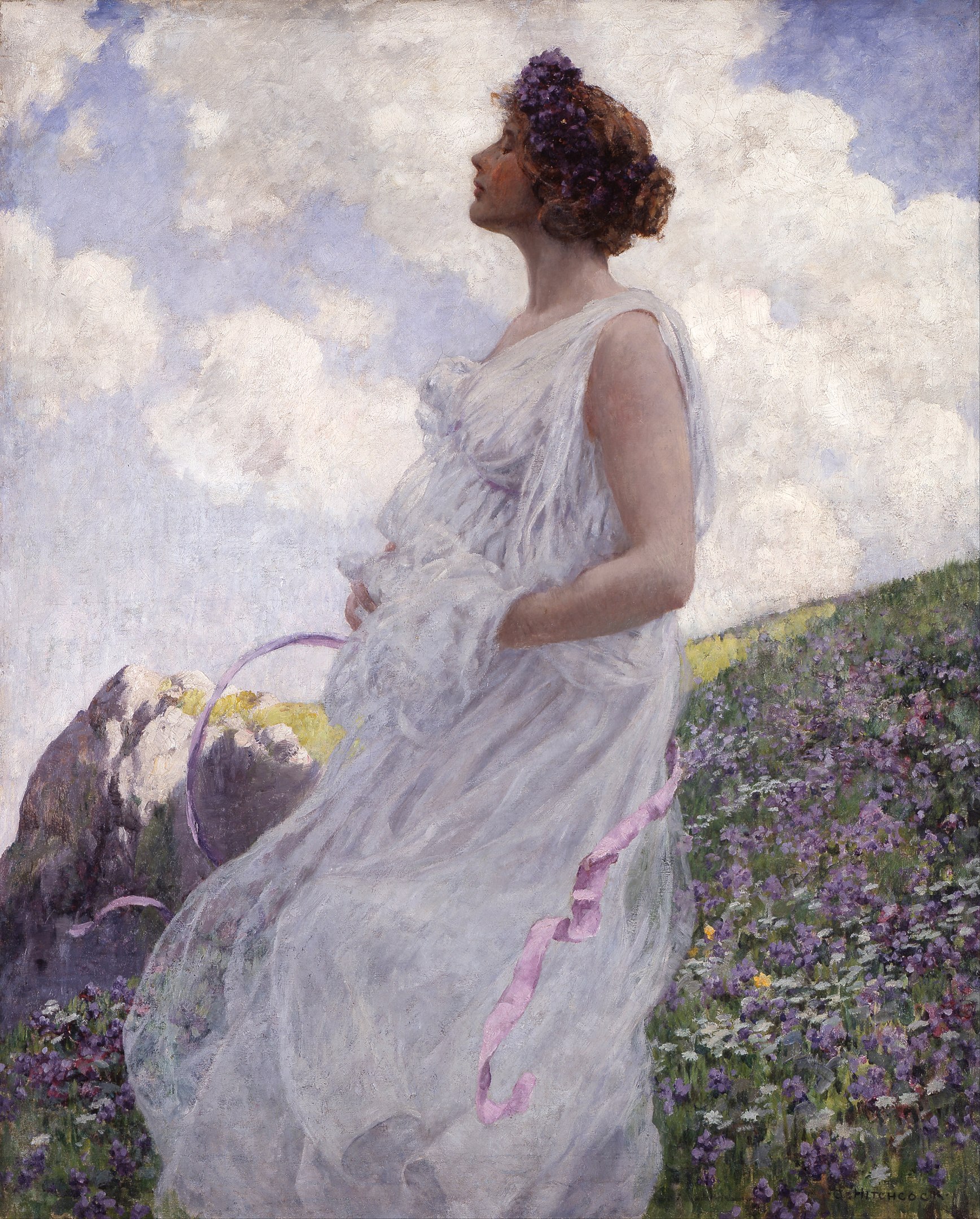
Courtesy: By George Hitchcock – GQFH366akERjVQ at Google Cultural Institute maximum zoom level, Public Domain, https://commons.wikimedia.org/w/index.php?curid=22491185
To read more about the people and places in The Odyssey by Homer (5th Century BCE) please open the link here. (Also read Book Two: Transforming English language arts by Karen Magro, Myths and Legends and The Odyssey in Art and Related Texts ).
Sailing to Byzantium by W. B. Yeats
That is no country for old men. The young
In one another’s arms, birds in the trees
—Those dying generations—at their song,
The salmon-falls, the mackerel-crowded seas,
Fish, flesh, or fowl, commend all summer long
Whatever is begotten, born, and dies.
Caught in that sensual music all neglect
Monuments of unageing intellect.
An aged man is but a paltry thing,
A tattered coat upon a stick, unless
Soul clap its hands and sing, and louder sing
For every tatter in its mortal dress,
Nor is there singing school but studying
Monuments of its own magnificence;
And therefore I have sailed the seas and come
To the holy city of Byzantium.
O sages standing in God’s holy fire
As in the gold mosaic of a wall,
Come from the holy fire, perne in a gyre,
And be the singing-masters of my soul.
Consume my heart away; sick with desire
And fastened to a dying animal
It knows not what it is; and gather me
Into the artifice of eternity.
Once out of nature I shall never take
My bodily form from any natural thing,
But such a form as Grecian goldsmiths make
Of hammered gold and gold enamelling
To keep a drowsy Emperor awake;
Or set upon a golden bough to sing
To lords and ladies of Byzantium
Of what is past, or passing, or to come.
(Retrieved Feb. 25, 2023 https://poets.org/poem/sailing-byzantium)
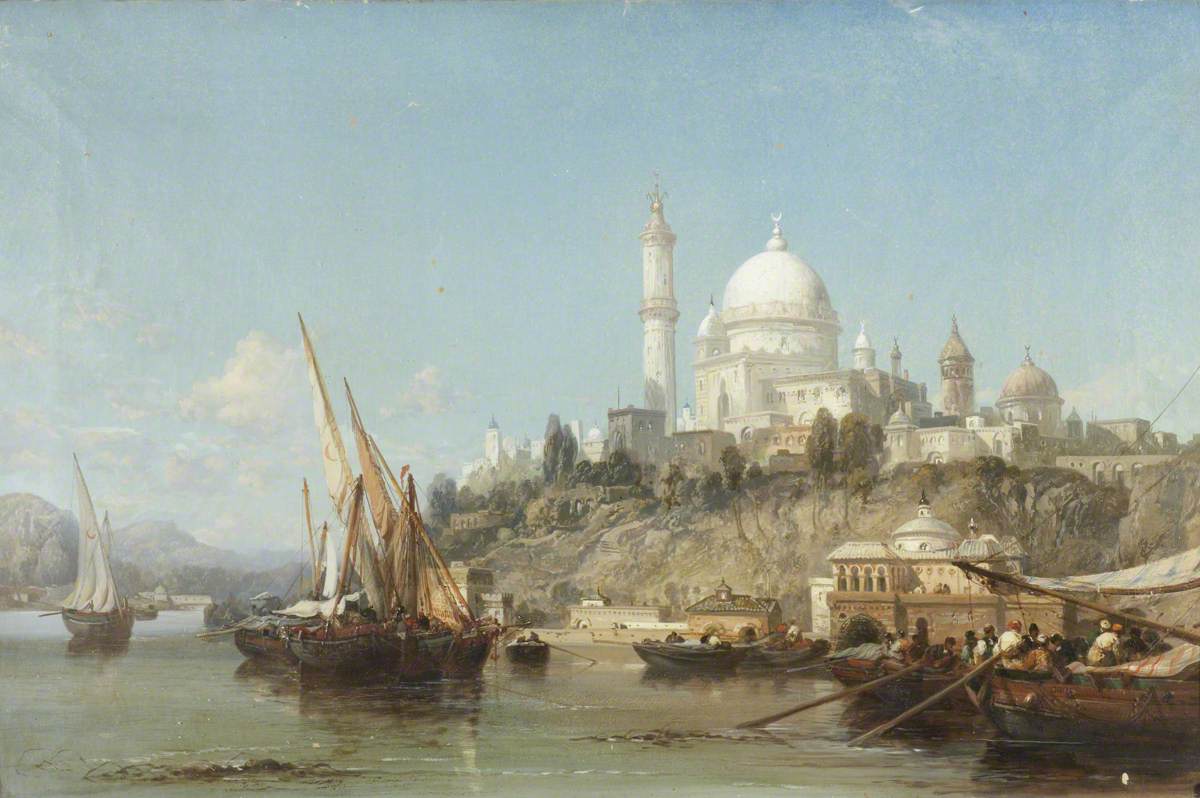
Courtesy: Cumbria County Council. “https://artuk.org/discover/artworks/constantinople-143757/search/actor:webb-james-18351895/page/1/view_as/grid” is licensed under CC BY-NC-ND 4.0.
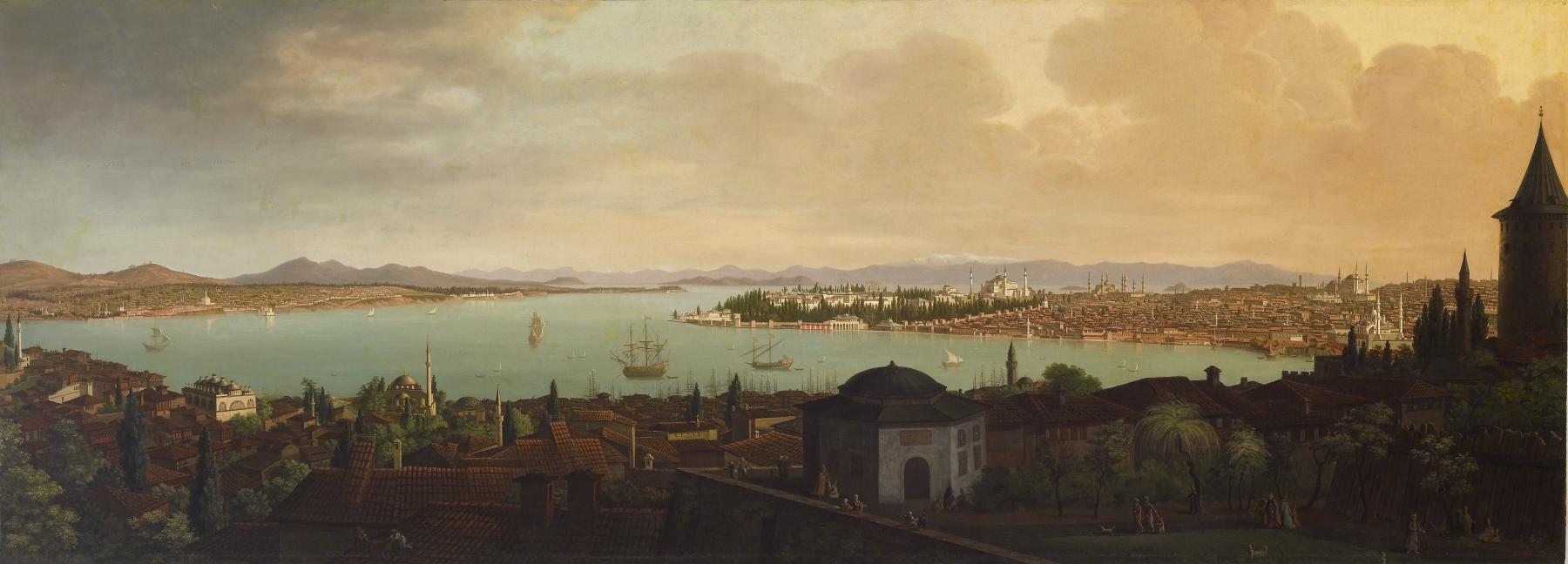
Courtesy: Gift of Commander and Mrs. P. Dow Berggren, 2003. “https://art.thewalters.org/detail/1416/view-of-constantinople/” is licensed under CC0 1.0.
“A Son of the Sea” by Bliss Carman (1861-1929)
I was born for deep-sea faring;
I was bred to put to sea;
Stories of my father’s daring
Filled me at my mother’s knee.
I was sired among the surges;
I was cubbed beside the foam;
All my heart is in its verges,
And the sea wind is my home.
All my boyhood, from far vernal
Bourns of being, came to me
Dream-like, plangent, and eternal
Memories of the plunging sea.

Courtesy: By Ilya Repin – www.2artgallery.com, Public Domain, https://commons.wikimedia.org/w/index.php?curid=3824636
“The Road Not Taken” by Robert Frost
Two roads diverged in a yellow wood,
And sorry I could not travel both
And be one traveler, long I stood
And looked down one as far as I could
To where it bent in the undergrowth;
Then took the other, as just as fair,
And having perhaps the better claim,
Because it was grassy and wanted wear;
Though as for that the passing there
Had worn them really about the same,
And both that morning equally lay
In leaves no step had trodden black.
Oh, I kept the first for another day!
Yet knowing how way leads on to way,
I doubted if I should ever come back.
I shall be telling this with a sigh
Somewhere ages and ages hence:
Two roads diverged in a wood, and I—
I took the one less traveled by,
And that has made all the difference.
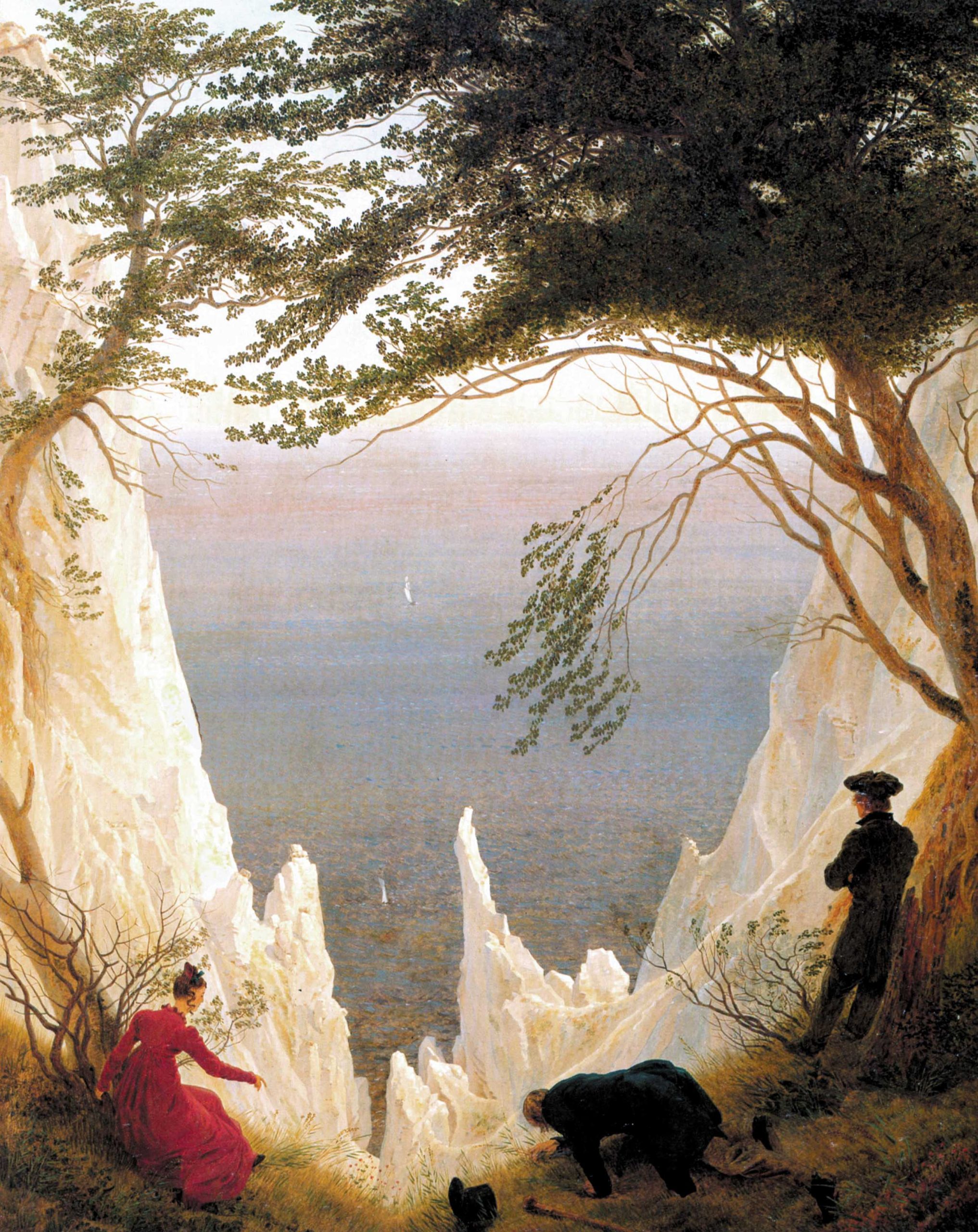
Courtesy: By Caspar David Friedrich – The Yorck Project (2002) 10.000 Meisterwerke der Malerei (DVD-ROM), distributed by DIRECTMEDIA Publishing GmbH. ISBN: 3936122202., Public Domain, https://commons.wikimedia.org/w/index.php?curid=151071
by Edna St. Vincent Millay (1892-1950)
The railroad track is miles away,
And the day is loud with voices speaking,
Yet there isn’t a train goes by all day
But I hear its whistle shrieking.
All night there isn’t a train goes by,
Though the night is still for sleep and dreaming,
But I see its cinders red on the sky,
And hear its engine steaming.
My heart is warm with friends I make,
And better friends I not be knowing;
Yet there isn’t a train I wouldn’t take,
No matter where it’s going.
“Ozymandias” by Percy Bysshe Shelley (1792-1822)
I met a traveller from an antique land,
Who said—“Two vast and trunkless legs of stone
Stand in the desert. . . . Near them, on the sand,
Half sunk a shattered visage lies, whose frown,
And wrinkled lip, and sneer of cold command,
Tell that its sculptor well those passions read
Which yet survive, stamped on these lifeless things,
The hand that mocked them, and the heart that fed;
And on the pedestal, these words appear:
My name is Ozymandias, King of Kings;
Look on my Works, ye Mighty, and despair!
Nothing beside remains. Round the decay
Of that colossal Wreck, boundless and bare
The lone and level sands stretch far away.
For the complete poetical works of Percy Bysshe Shelley please open the link here.
The statue of Ramses II was discovered in 1820 by the Explorer Giovanni Batista Cavellia, near Memphis, Egypt. Ramses II was the third pharaoh of the 19th Egyptian dynasty.
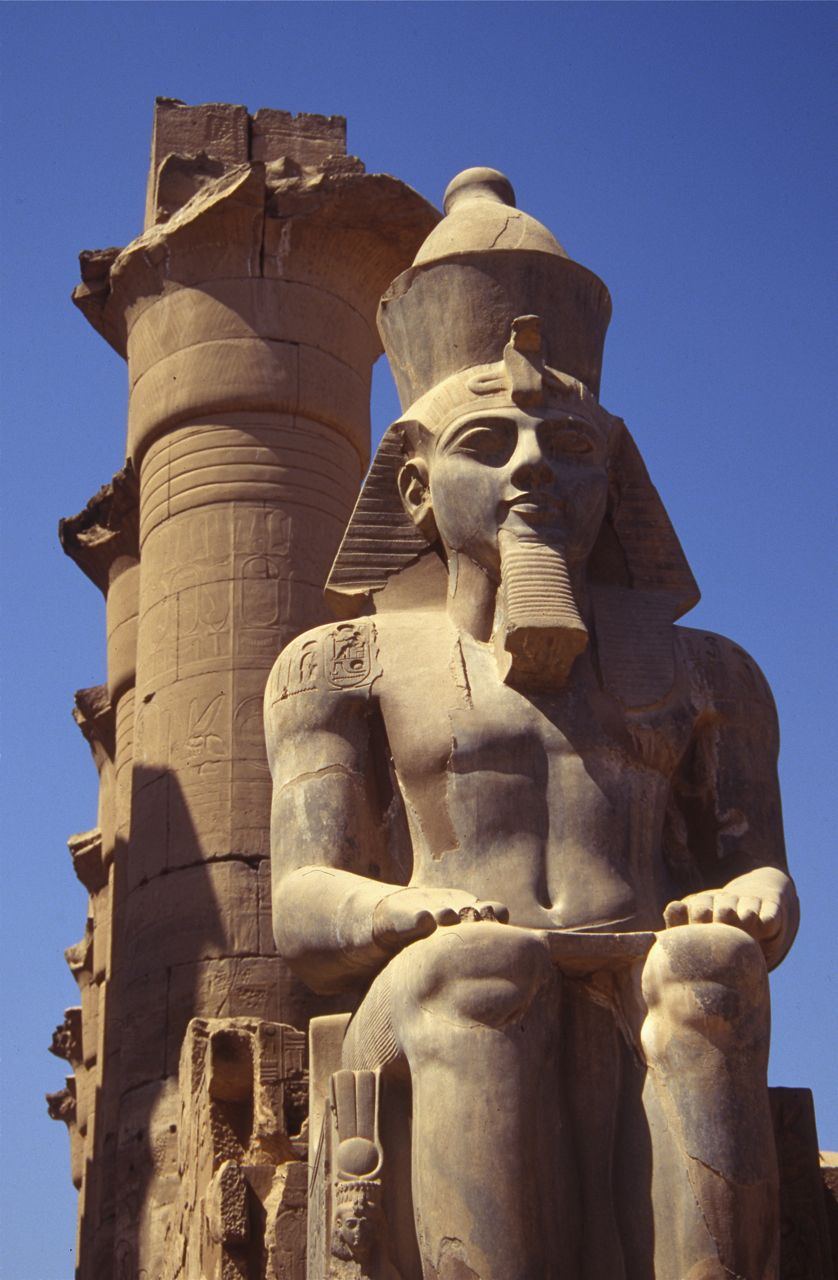
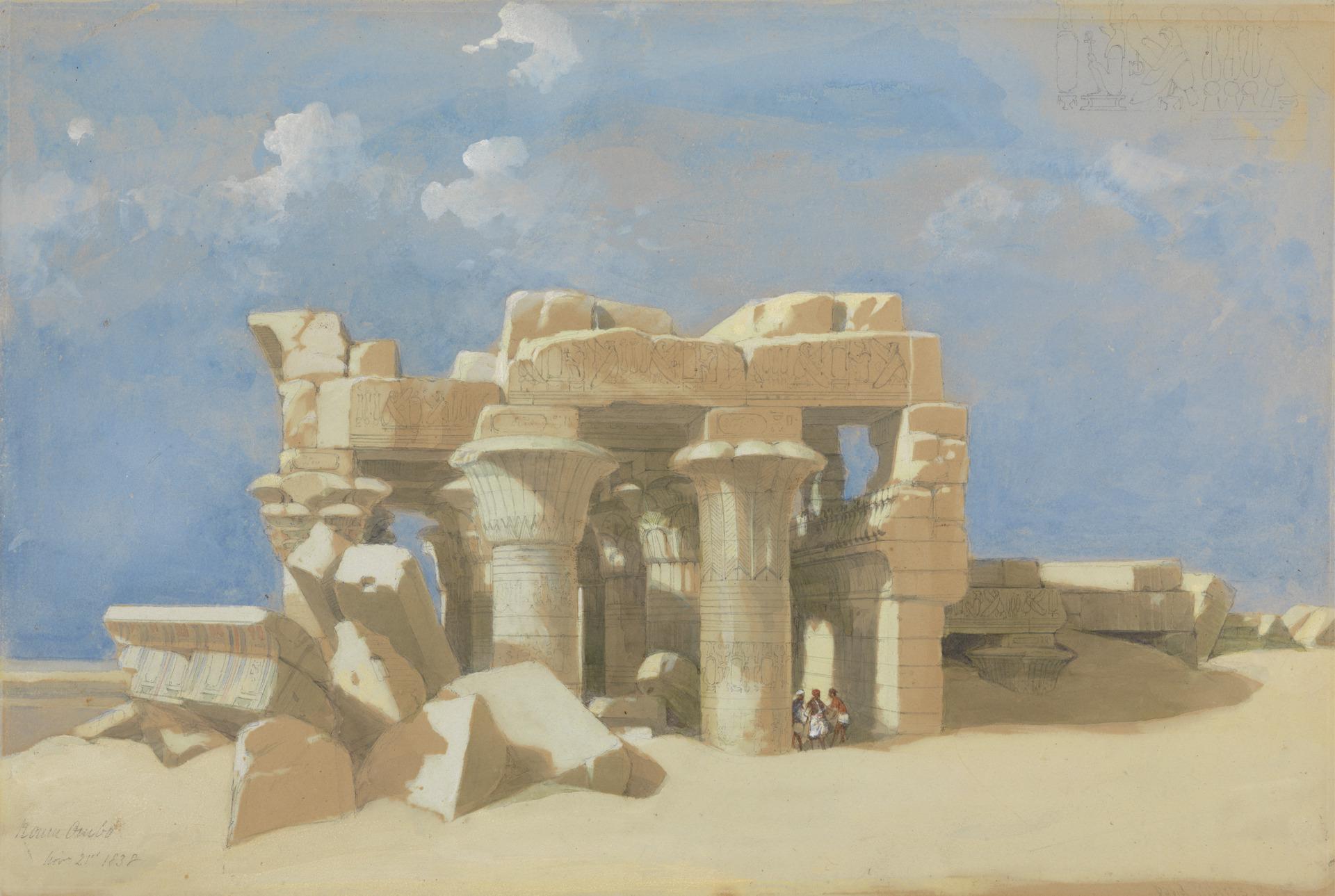
Courtesy: Yale Center for British Art, Paul Mellon Collection. “https://collections.britishart.yale.edu/catalog/tms:6071” is licensed under CC0 1.0.
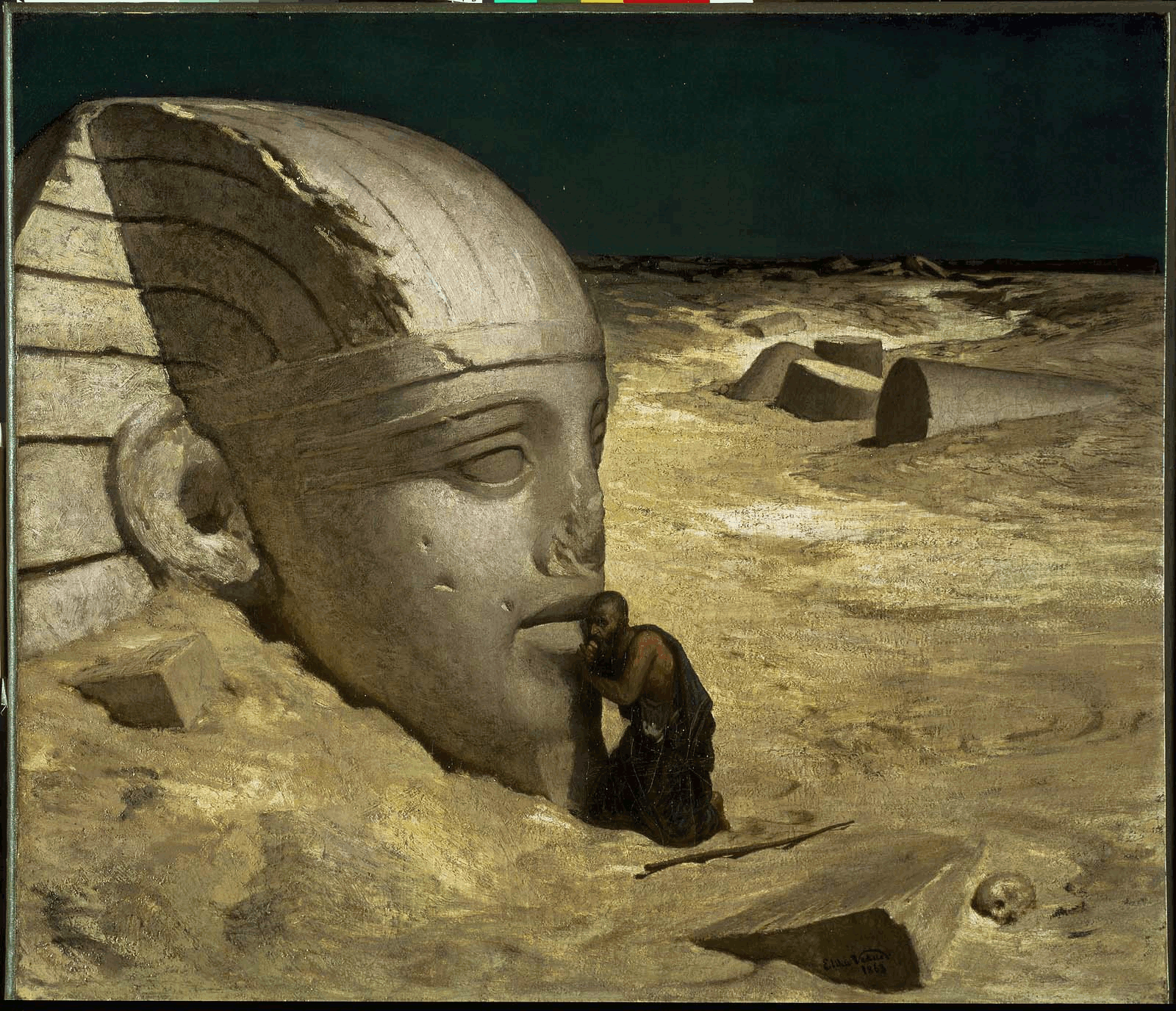
Courtesy: By Elihu Vedder – http://www.arabiaexotica.com/images/ArtGallery/The%20Questioner%20of%20the%20Sphinx.gif, Public Domain, https://commons.wikimedia.org/w/index.php?curid=6765539
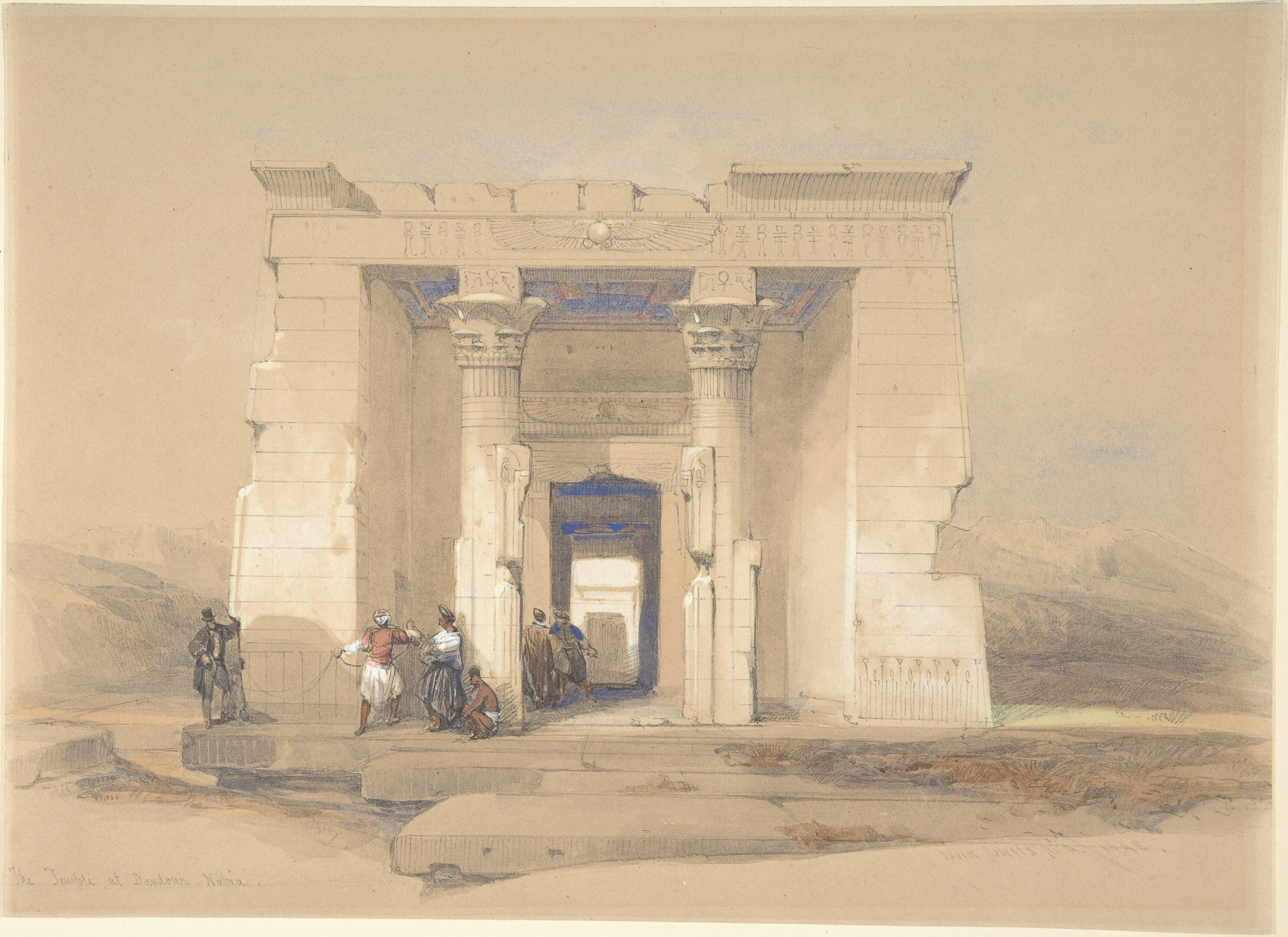
Courtesy: Gift of Philippe and Edith de Montebello, 2007. “https://www.metmuseum.org/art/collection/search/382200” is licensed under CC0 1.0.
Metropolitan Museum of Art Note about David Roberts’ “Temple of Dedur, Nubia” Drawing:
“Roberts traveled up the Nile in 1838 and reached Abu Simbel in Nubia on November 8. One of the local monuments he sketched during three days in the area was the small Roman era temple at Dendur. After returning to London in 1839, the artist created detailed watercolors that Louis Haghe used to create lithographs. Eighty-five Egyptian subjects, published 1848–49, included “The Temple of Dandour, Nubia.” Roberts’s images shaped how Europeans saw the region and his choice of this subject may even have influenced the actual temple’s preservation in the 1960s—before the site was flooded by the High Aswan Dam, the structure was dismantled and presented to the United States by the government of Egypt. Today, the Temple of Dendur (68.154) is one of the Museum’s great treasures.”
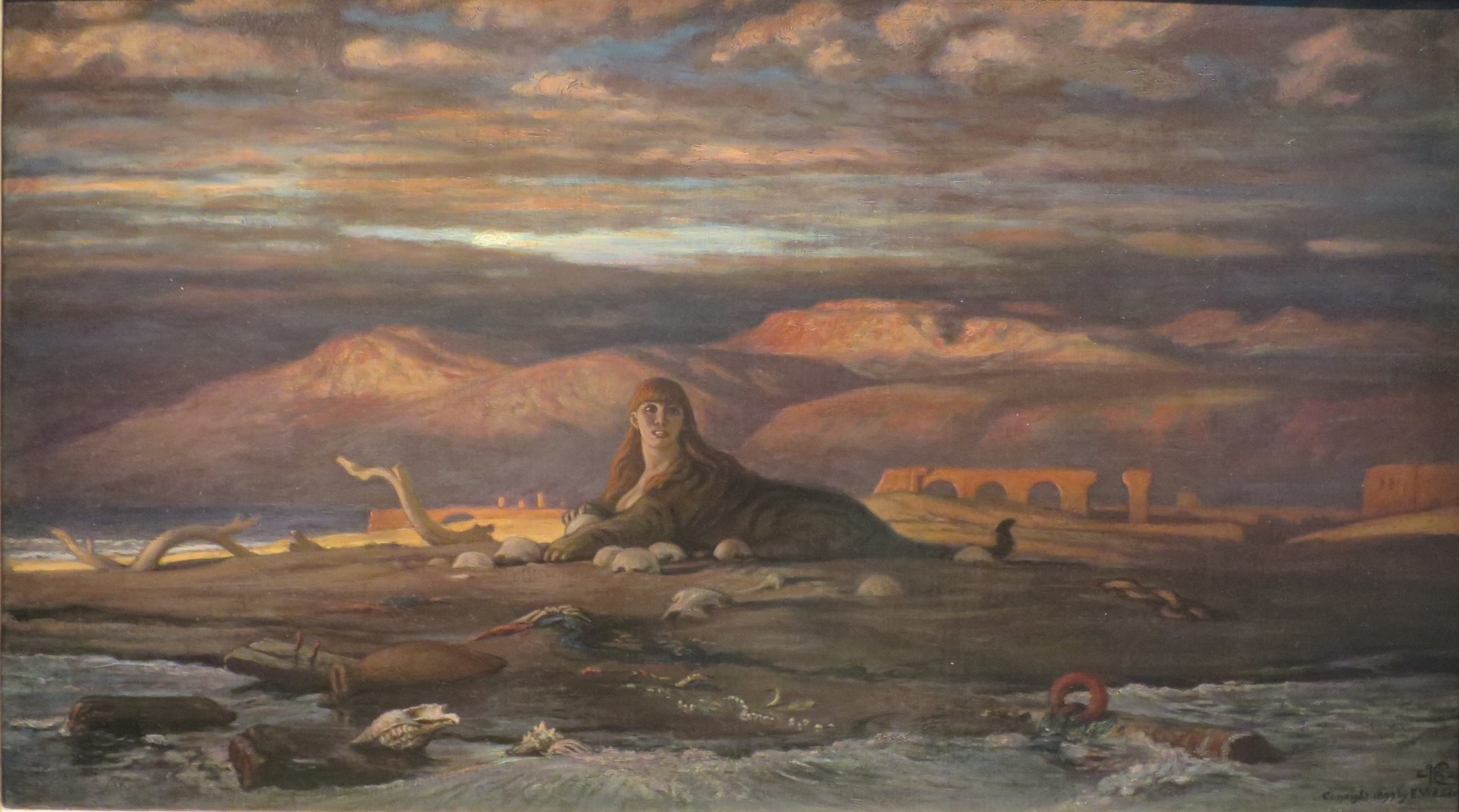
Courtesy: By Elihu Vedder – Own work, Public Domain, https://commons.wikimedia.org/w/index.php?curid=78302279
“The Sphinx” by Mathilde Blind (1841-1896)
Wanderer, behold Life’s riddlle writ in stone
Fronting Eternity with lidless eyes;
Of all that is beneath the changing skies
Immutably abiding and alone.
The handiwork of hands unseen, unknown,
When Pharaohs of immortal dynasties
Built Pyramids to brave the centuries.
Cheating Annihilation of her own.
My heart grown hushed before it. Nay, methinks
That Man, and all on which Man wastes his breath,
The World, and all the World inheriteth,
With infinite, inexorable links
Grappling the soul; that love, hate, birth and death
Dwindle to nothingness before thee—Sphinx.
“The Sphinx Speaks” by Francis Saltus Saltus
Carved by a mighty race whose vanished hands
Formed empires more destructible than I,
In sultry silence I forever lie,
Wrapped in the shifting garment of the sands.
Below me, Pharoah’s scintillating hands
With clashing of loud cymbals have passed by,
And the eternal reverence of the sky
Fall royally on me and my lands.
The record of the future broods in me;
I have with worlds of blazing stars been crowned,
But none my subtle mystery hath known
Save one, who made his way through blood and sea,
The Corsican, prophetic and renowned,
To whom I spake, one awful night alone.
An American Anthology. Ed. Edmund Clarence Stedman. Boston: Houghton Mifflin, 1900

Courtesy: By Fernand Khnopff – _AGlYSd0kETwGw at Google Cultural Institute maximum zoom level, Public Domain, https://commons.wikimedia.org/w/index.php?curid=22493220

